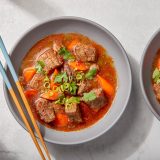Fuchsia Dunlop (“The Food of Sichuan”) had just moved from one apartment to another in London’s East End. In her ground-floor kitchen, boxes were still piled high as I looked for a good spot to take notes while she prepared a few favorite dishes, including Sichuan red-braised beef (hongshao niurou). The kitchen looked out onto a garden she planned to replant with vegetables and herbs, ditching the border ornamentals.
Red-braising is a Chinese cooking method that involves slow cooking with a soy sauce base, which gives the dish its deep color. Dunlop pointed out that in Sichuan, the soy sauce is often replaced with chili bean paste, toban djan, which adds both pizazz as well as a rich chestnut color and deeper, funkier flavor. Made with broad beans, salted chilies and, in many cases, wheat flour, it is not as spicy as the fiery Cantonese chili oil that is sometimes used in this dish.
In a tasting of six brands of toban djan, our first discovery was to beware of chili paste with extra ingredients. Lee Kum Kee Chili Bean Sauce, our least favorite, contains more than a dozen, including sugar, modified cornstarch, dehydrated garlic, soybean oil and disodium inosinate (an MSG-like flavor enhancer). The simplest formulations—red chili, broad bean, salt and flour—won. Vacuum-packed brands also came up winners, since oil-based jars offer less complex flavors and are heavy on the chilies. Our favorite was from Sichuan Pixian Douban Co. If you can’t find toban djan, ¼ cup red miso mixed with 3 tablespoons chili-garlic sauce is a decent substitute.
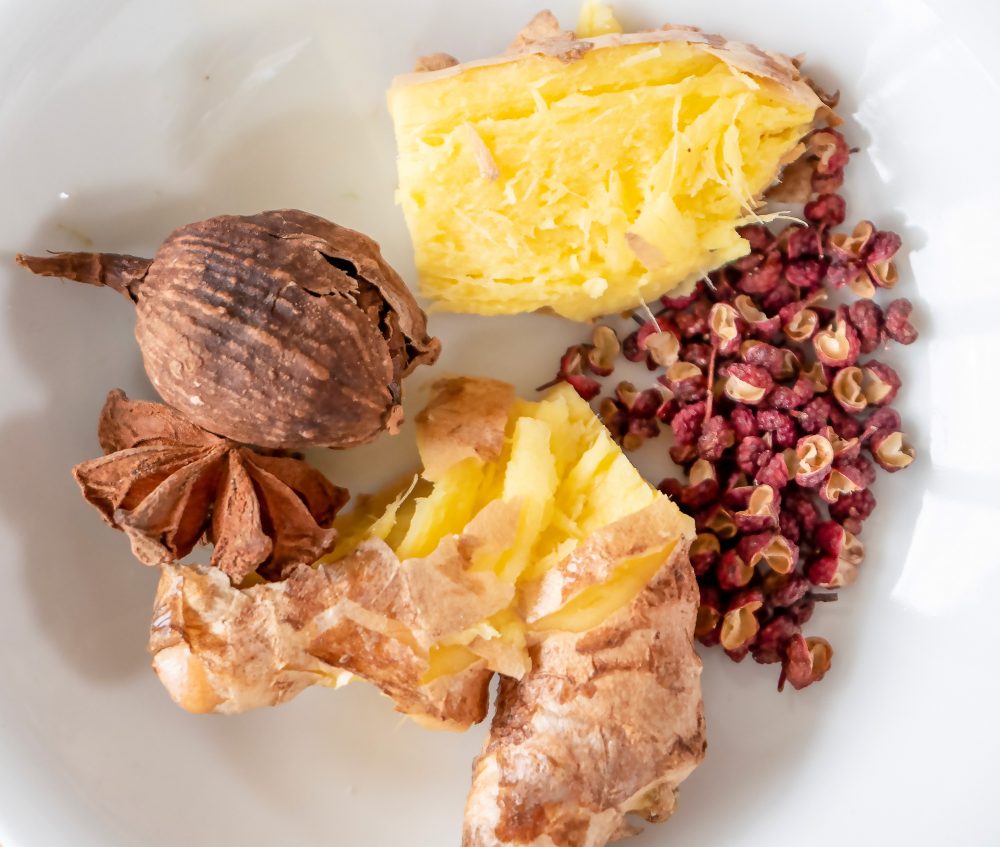
The beauty of this dish is twofold. It is based on a foundation of powerhouse flavors: toban djan, ginger, star anise, Sichuan pepper and black cardamom, all briefly cooked in oil. Then Shaoxing wine is added and cooked until the liquid has evaporated. Unlike most European stews, the recipe is jump-started with big flavors, a revolution in cooking as opposed to slowly coaxing flavor from a sofrito. Second, the beef is not browned; it is simply added to the pot along with water and scallions. Who needs browning and stock when you are starting with toban djan? Compare this recipe to boeuf bourguignon, and the Sichuan approach is much smarter.
The beef is cooked covered in a 350°F oven, and then finished uncovered to brown any meat above the surface. (Another reason that initial browning is unnecessary.) Carrots or other vegetables (daikon is traditional in Sichuan) are added for the last 20 minutes or so or until just tender.
Roll-Cut How-To
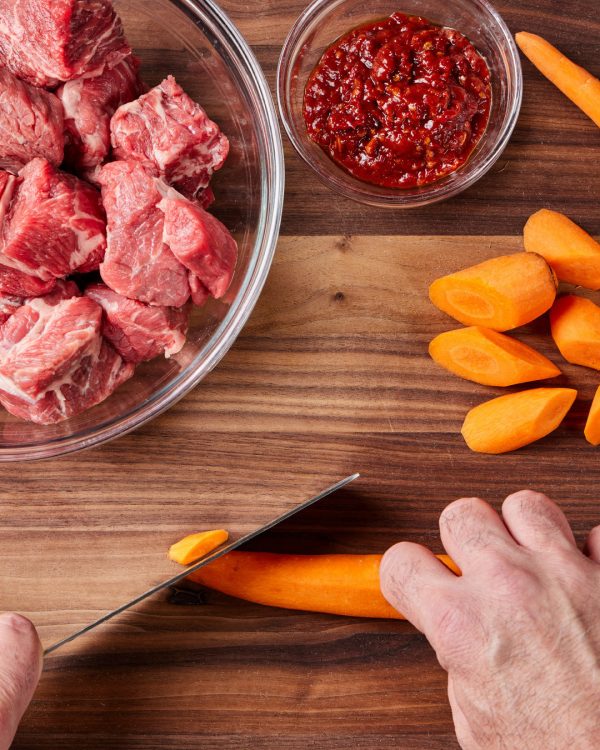
1. With a chef’s knife held at a 45-degree angle to the carrot, trim off and discard the tip.
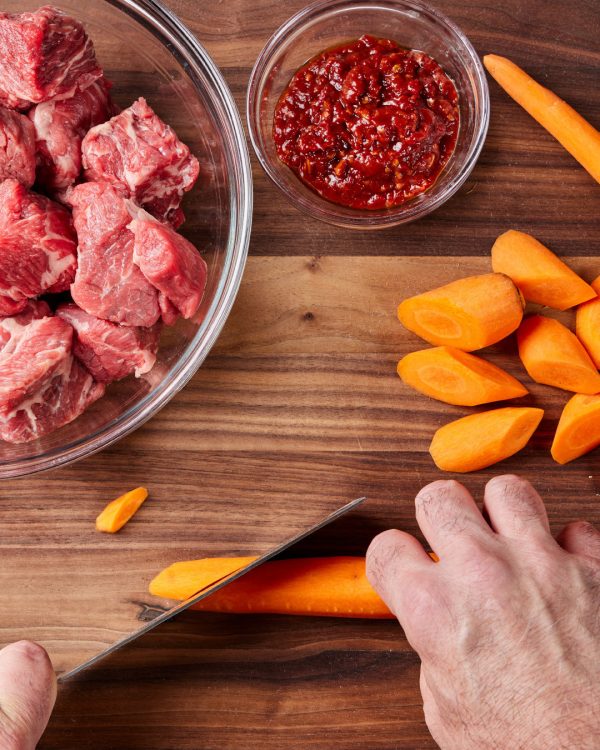
2. Roll the carrot one-quarter turn and, with the knife still at the same angle, make another cut.
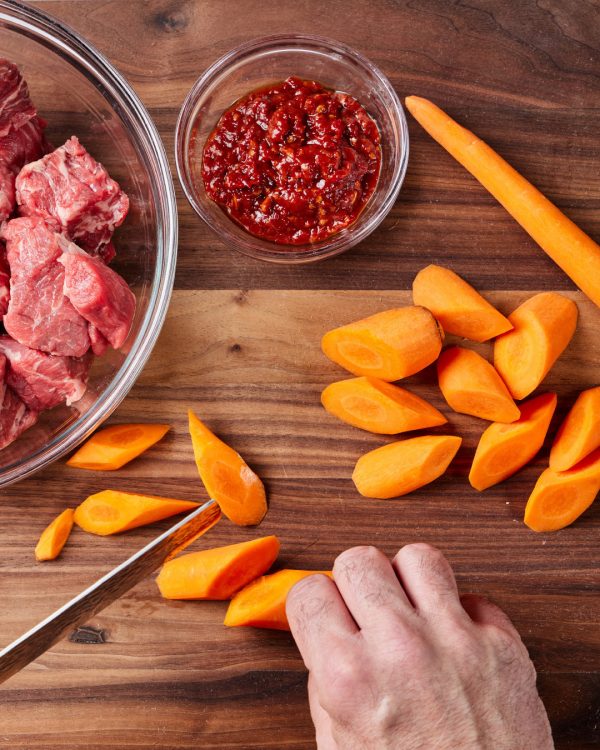
3. Continue rolling and cutting until you reach the end of the carrot; discard the carrot top.
